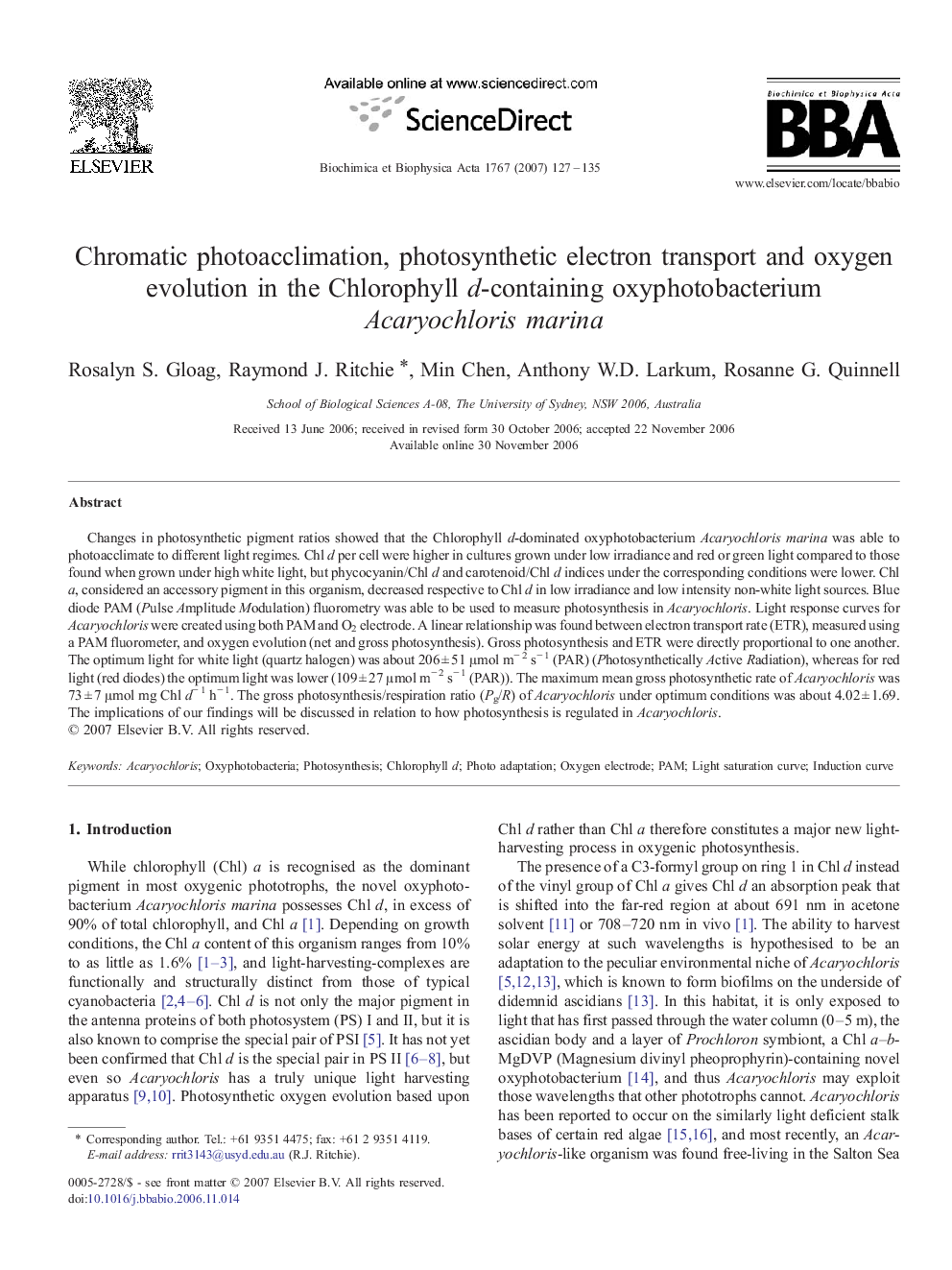| Article ID | Journal | Published Year | Pages | File Type |
|---|---|---|---|---|
| 1943516 | Biochimica et Biophysica Acta (BBA) - Bioenergetics | 2007 | 9 Pages |
Changes in photosynthetic pigment ratios showed that the Chlorophyll d-dominated oxyphotobacterium Acaryochloris marina was able to photoacclimate to different light regimes. Chl d per cell were higher in cultures grown under low irradiance and red or green light compared to those found when grown under high white light, but phycocyanin/Chl d and carotenoid/Chl d indices under the corresponding conditions were lower. Chl a, considered an accessory pigment in this organism, decreased respective to Chl d in low irradiance and low intensity non-white light sources. Blue diode PAM (Pulse Amplitude Modulation) fluorometry was able to be used to measure photosynthesis in Acaryochloris. Light response curves for Acaryochloris were created using both PAM and O2 electrode. A linear relationship was found between electron transport rate (ETR), measured using a PAM fluorometer, and oxygen evolution (net and gross photosynthesis). Gross photosynthesis and ETR were directly proportional to one another. The optimum light for white light (quartz halogen) was about 206 ± 51 μmol m− 2 s− 1 (PAR) (Photosynthetically Active Radiation), whereas for red light (red diodes) the optimum light was lower (109 ± 27 μmol m− 2 s− 1 (PAR)). The maximum mean gross photosynthetic rate of Acaryochloris was 73 ± 7 μmol mg Chl d− 1 h− 1. The gross photosynthesis/respiration ratio (Pg/R) of Acaryochloris under optimum conditions was about 4.02 ± 1.69. The implications of our findings will be discussed in relation to how photosynthesis is regulated in Acaryochloris.
